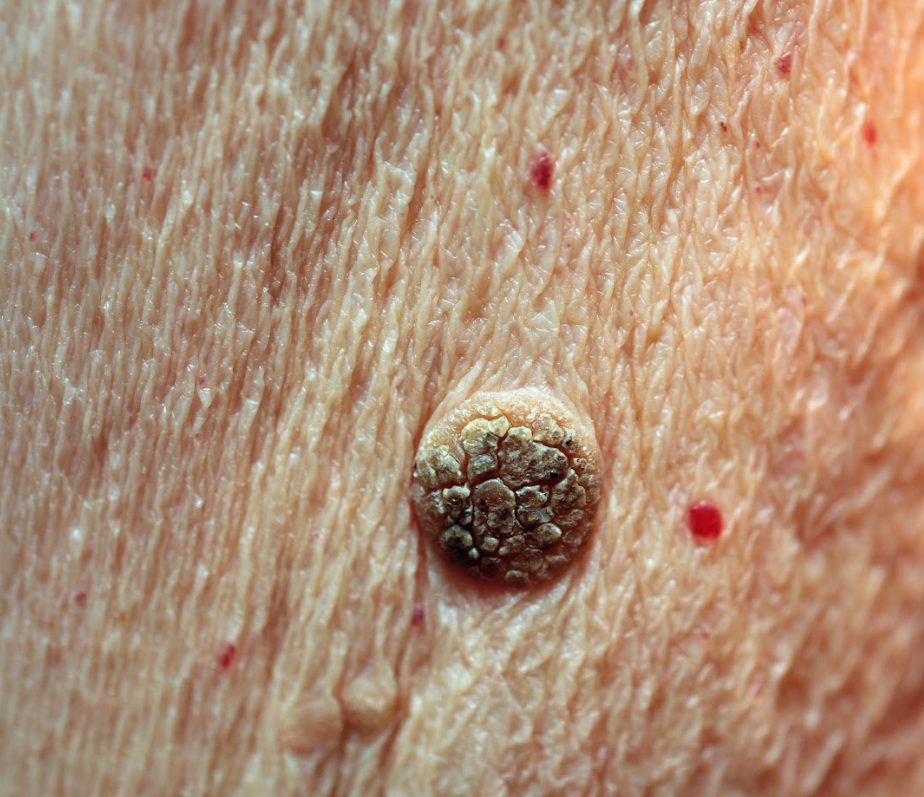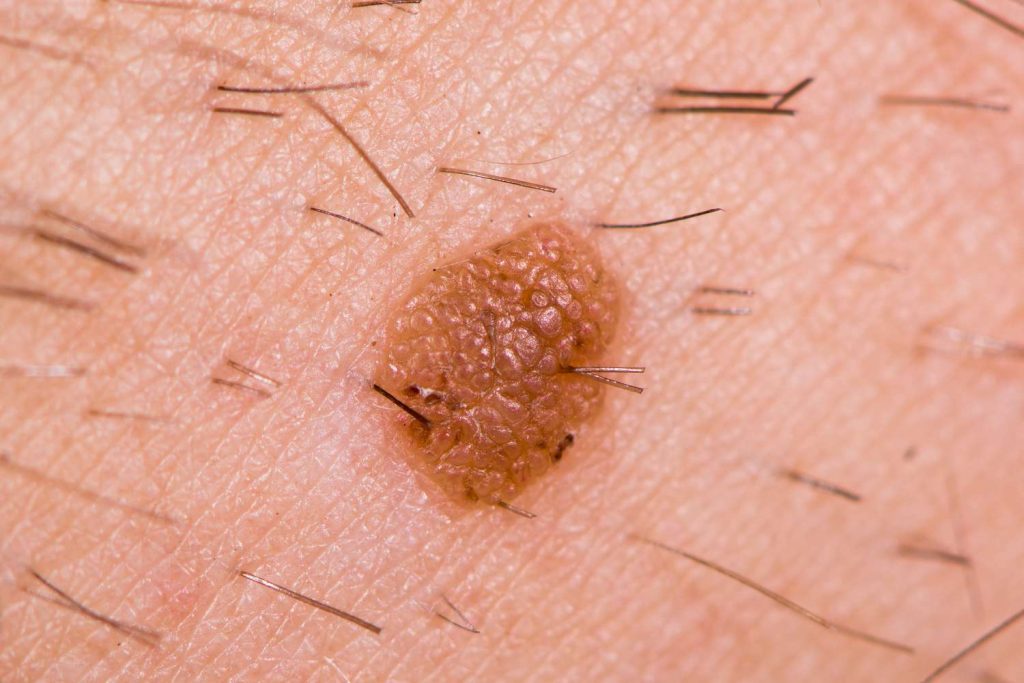
1. What is seborrheic keratosis?
A seborrheic keratosis is a common benign skin growth, similar to a mole. Most
people will have at least one in their lifetime. They tend to appear in mid-adulthood
and their frequency increases with age. They are harmless and don’t require
treatment, but you can have them removed if they bother you.
Skin growths like seborrheic keratoses are sometimes also called epidermal tumors.
That doesn’t mean they’re cancer, though. Technically, moles and warts are also
epidermal tumors. That just means they are clusters of extra cells on the epiderma, the
outer layer of the skin. They aren’t considered a risk factor for skin cancer.

2. Who gets seborrheic keratosis?
Anyone can get one, but most commonly:
– People who are 50 and older. They usually begin to appear in middle age, and
rarely in younger people. About 30% of people have at least one by the age of
40, and about 75% by the age of 70.
– People with a family history of it. About half of all cases of multiple
seborrheic keratoses occur in families, suggesting that the tendency to develop
many of them may be inherited.
– Lighter-skinned people. Classic seborrheic keratosis as described here appears
less frequently in darker-skinned people. However, a variant of seborrheic
keratosis called dermatosis papulosa nigra is very common in darker-skinned
people, including those of African, Asian and Hispanic descent.

3. Do seborrheic keratoses cause symptoms?
They usually don’t, but people sometimes report:
– Itching.
– Irritation from friction.
– Bleeding.
If these symptoms annoy you, you may want to have the growth removed.
4. How is seborrheic keratosis diagnosed?
– Examination. Dermatologists can usually identify a seborrheic keratosis with the
naked eye.
– Dermoscopy. If in doubt, your healthcare provider may look at the growth under a
dermascope, a small, handheld lighted microscope.
– Biopsy. If your healthcare provider suspects any cancer, they will want to take a
sample — or remove the whole growth — to examine in a lab.
5. How is seborrheic keratosis removed?
Medical offices offer several options for removing your seborrheic keratosis:
– Cryotherapy
– Electrodessication/ Curettage
– Shave excision
– Laser therapy
– Prescription Hydrogen peroxide 40%